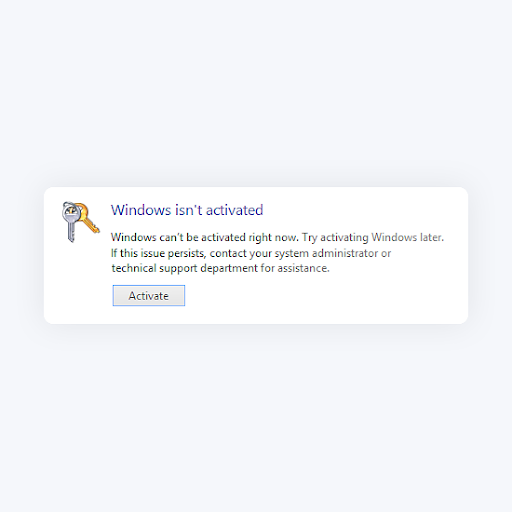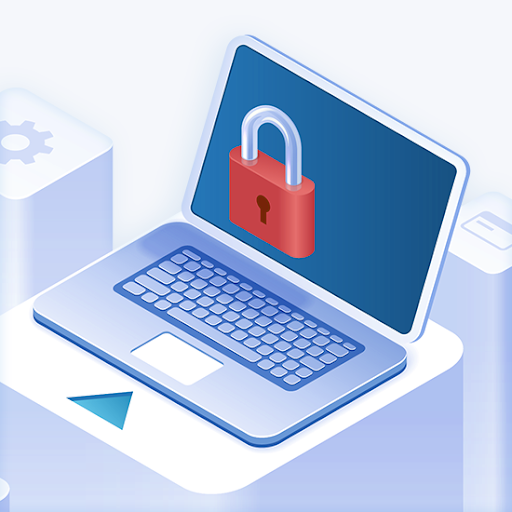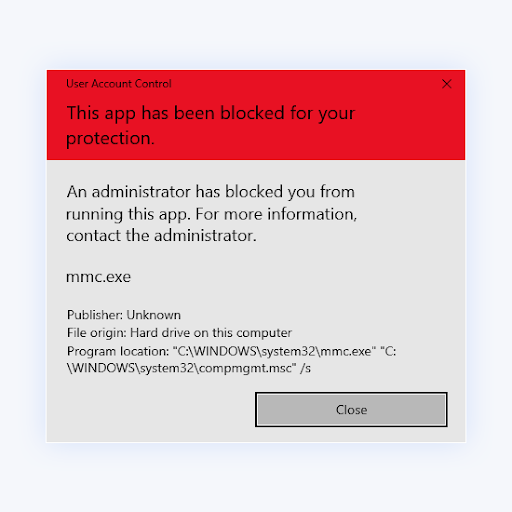Identity Theft in Remote Work: Best Practices for Protecting Yourself and Your Business

The rapid advancements in technology, changing work culture, and an increasing emphasis on work-life balance significantly impact the popularity of remote work.
However, the shift to remote work has its challenges. One notable concern is the increased risk of identity theft for individuals and businesses alike. To reduce such risks, having a cyber security plan is essential.
Read on, and let’s talk about the dangers of identity theft. More importantly, we’ll share some tips to combat such and protect sensitive information.
Understanding Identity Theft
Identity theft occurs when someone illegally obtains and uses another person's private information, often for financial gain or fraudulent activities. There are several types of identity theft, each with its unique set of challenges and consequences:
- Financial Identity Theft involves stealing someone's financial information, like bank accounts or credit card details, to make unauthorized transactions or open new accounts.
- Employment and Tax-Related Identity Theft: In this type, the thief uses a person's Social Security number or other personal information to secure employment or file fraudulent tax returns.
- Medical Identity Theft: Here, the perpetrator accesses an individual's medical information to receive healthcare services, prescription drugs, or even file false insurance claims.
Why Is Remote Work Prone to Identity Theft?
Sure, remote work can deliver plenty of benefits. Unfortunately, it can also make people and businesses vulnerable to identity theft. Below, we’ll explore some reasons why such is often the case.
The Digital Nature of Remote Work
Remote work is heavily reliant on digital technology for communication and collaboration, which inherently exposes workers and businesses to potential cybersecurity threats.
Lack of Centralized Security Infrastructure
Organizations usually implement centralized security infrastructure in a traditional office setting to protect their employees and data. However, remote work often lacks such measures, as employees work from various locations and use their own devices and networks.
This decentralization makes it more challenging to enforce consistent security protocols, leaving employees and businesses more susceptible to identity theft.
Insufficient Home Security Measures
Many remote workers might not have the same security measures in their home networks and devices compared to a corporate environment.
Inconsistent Security Awareness and Training
It’s common for remote workers to lack security awareness. In addition, they might not have the right training compared to their office-based counterparts, leading to a lack of understanding and vigilance in protecting sensitive information.
This knowledge gap can make it easier for cybercriminals to trick employees into revealing personal or company data, contributing to the increased risk of identity theft in remote work settings.
The Impact of Identity Theft on Victims
The consequences of identity theft can be far-reaching and long-lasting for the victims. The impact is not only financial but can also severely affect their emotional well-being and reputation.
- Financial Repercussions: Victims may face significant financial losses, damaged credit scores, and a lengthy process of recovering their stolen funds or rectifying fraudulent transactions.
- Emotional Distress: Dealing with the consequences can lead to anxiety, depression, and a general sense of vulnerability.
- Reputation Damage: In cases where stolen information is used for criminal activities, victims may have to deal with legal issues and suffer damage to their personal and professional reputations.
Best Practices for Individuals to Protect Themselves
A proactive approach is necessary to protect yourself from identity theft, which is possible by doing the following:
1. Strong Password Management
A crucial step in safeguarding your digital identity is adopting robust password management practices.
Create unique passwords for each account, combining letters, numbers, and special characters.
Using a password manager can help you generate and securely store complex passwords, making it easier to maintain different passwords for various accounts without forgetting them.
2. Use Multi-Factor Authentication (MFA)
Adding an extra layer of security through MFA can significantly reduce the risk of unauthorized access to your accounts.
MFA requires at least two forms of verification (e.g., password and fingerprint) to access an account, making it more challenging for cybercriminals to gain access using stolen information alone.
Many online services now offer MFA options, such as SMS-based verification, authenticator apps, or hardware tokens. Choose the most suitable option for your needs and enable MFA wherever possible.
3. Recognizing and Avoiding Phishing Attacks
Being vigilant and informed about phishing and social engineering attacks is essential in protecting sensitive information.
Be cautious of unsolicited messages, especially those that request personal information or ask you to click on suspicious links.
Always double-check the sender's information and contact the organization directly to confirm the authenticity of any unusual requests.
4. Securing Home Networks and Devices
Taking steps to secure your home network and devices can minimize the risk of identity theft.
Update your operating systems to take advantage of the newest patches to protect against known vulnerabilities.
Employ a reputable VPN to encrypt your internet connection and use reliable antivirus software to detect and remove potential threats.
Consider using identity theft software, such as LifeLock. If you don’t like the latter, check out HSH's expert recommendation on LifeLock alternatives. They will offer top-notch protection for your peace of mind.
Best Practices for Businesses to Protect Their Employees and Data
In the same way that individuals must be proactive, businesses should have the same approach. This is possible by doing the following:
1. Developing a Comprehensive Cybersecurity Policy
A strong cybersecurity policy is essential for businesses to ensure the safety of their employees and data in remote work environments.
This policy should include remote work security guidelines, employee training, and awareness programs to help employees understand potential threats and adopt best practices for maintaining security.
2. Implementing Access Control and Monitoring
Controlling and monitoring access to sensitive company data is critical for reducing identity theft risk.
Implement role-based access control (RBAC) to ensure that employees have access only to the information and systems necessary for their job functions.
Regularly auditing and monitoring for suspicious activity can help identify potential breaches and allow for a swift response to any security incidents.
3. Encouraging a Security-First Culture
Cultivating a security-first mindset among employees is crucial for maintaining the integrity of company data and minimizing the risk of identity theft.
Encourage open communication about security concerns and provide clear channels for reporting suspicious activities or incidents.
Incentivize employees to follow best practices and stay up-to-date on the latest cybersecurity trends and threats.
4. Providing Secure Communication and Collaboration Tools
Offering secure communication and collaboration tools to employees can minimize the risk of sensitive information being intercepted or leaked.
Encourage the use of end-to-end encrypted communication platforms, secure file-sharing services, and VPNs to safeguard data during transmission.
5. Conducting Regular Security Assessments and Audits
Performing regular security assessments and audits can help businesses identify potential vulnerabilities in their remote work environment and address them proactively.
These assessments can include penetration testing, vulnerability scanning, and employee compliance checks, providing valuable insights into the organization's overall security posture.
6. Establishing an Incident Response Plan
A well-defined incident response plan ensures that businesses can react swiftly and effectively to potential identity theft or other security incidents.
Regularly reviewing and updating the plan and conducting simulated exercises can help prepare the organization for real-world scenarios.
Recovery Steps in Case of Identity Theft
Assume that the worst can happen so you can prepare for it. In case you're a victim of identity theft, below are some things you can do:
1. Immediate Action
Report the incident promptly to the relevant financial institutions, credit bureaus, and law enforcement agencies to limit damage and prevent further misuse of your information.
Change the passwords and security questions for all affected accounts immediately, and enable multi-factor authentication where possible for added security.
2. Monitoring and Follow-up
Regularly monitor your credit report for suspicious activity or unauthorized accounts.
Request a fraud alert or credit freeze with the major credit bureaus to help prevent new accounts from being opened in your name.
Review your bank and credit card statements to identify fraudulent transactions and report discrepancies to your financial institutions.
Maintain detailed records of all communication, steps taken, and expenses incurred during the identity theft recovery. This documentation can be valuable in resolving disputes or supporting any legal actions taken.
3. Long-term Recovery and Prevention
Learn from the experience and implement stronger security measures to prevent future incidents, such as improving password management, using a VPN, and being more vigilant about phishing attempts.
Review and update your cybersecurity policies if you're a business, ensuring that all employees are aware of the updated policies and receive training on best practices.
Consider investing in identity theft protection services that offer monitoring, alerts, and assistance in the recovery process.
Share your experience and the lessons learned with your peers, colleagues, and professional networks to help others become more vigilant and better prepared to deal with potential identity theft incidents.
Wrapping Up
Overall, remote work has its benefits. However, it also comes with drawbacks, and that includes the increased possibility of identity theft. Luckily, you can avoid such if you have a proactive approach. Consider doing the things mentioned above to protect yourself and your business.










